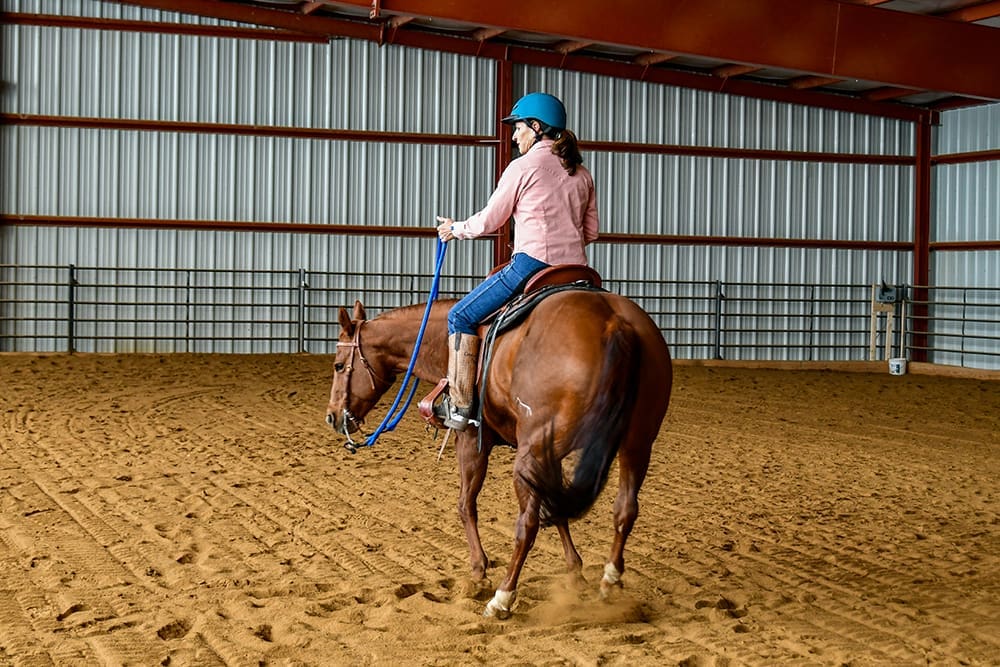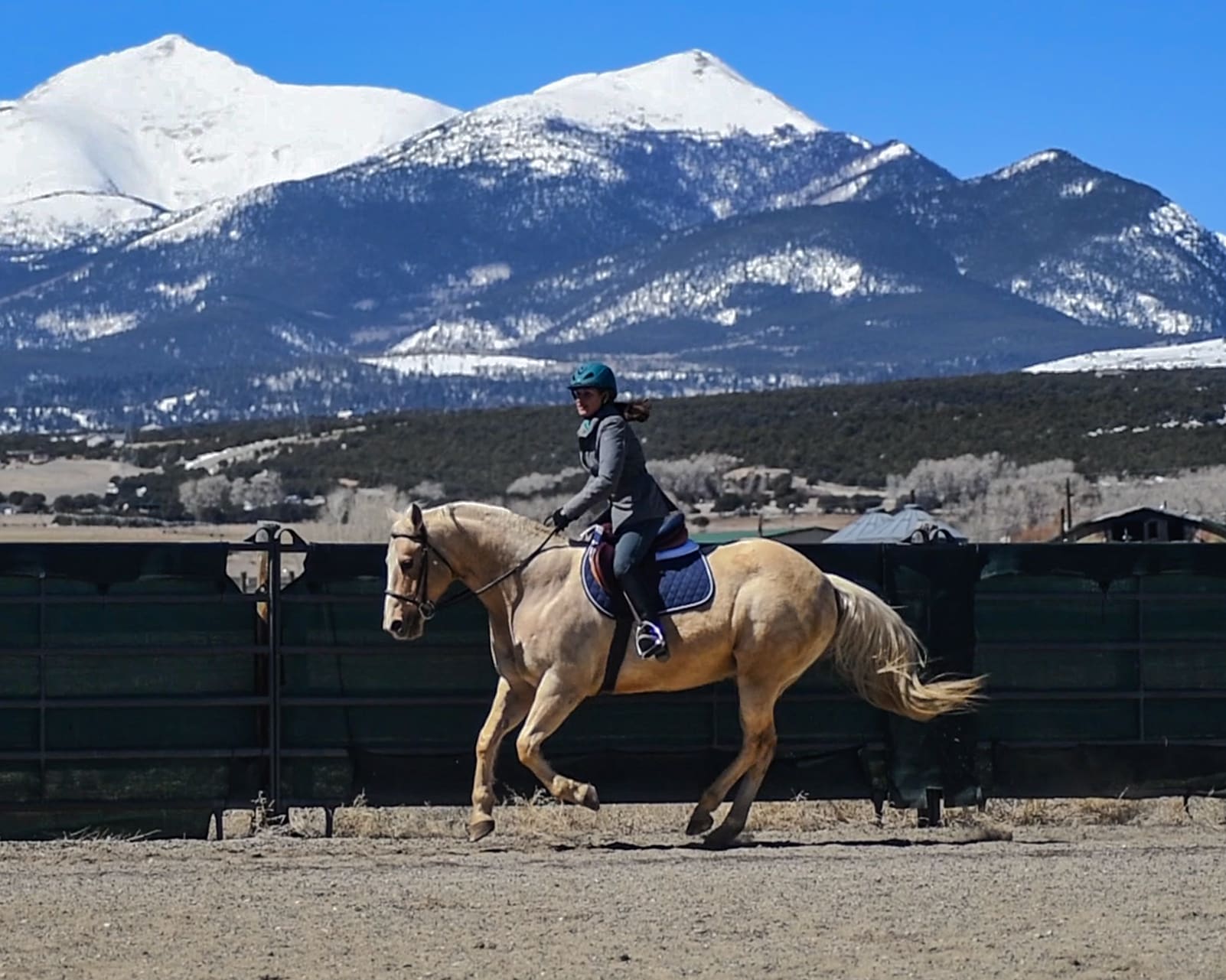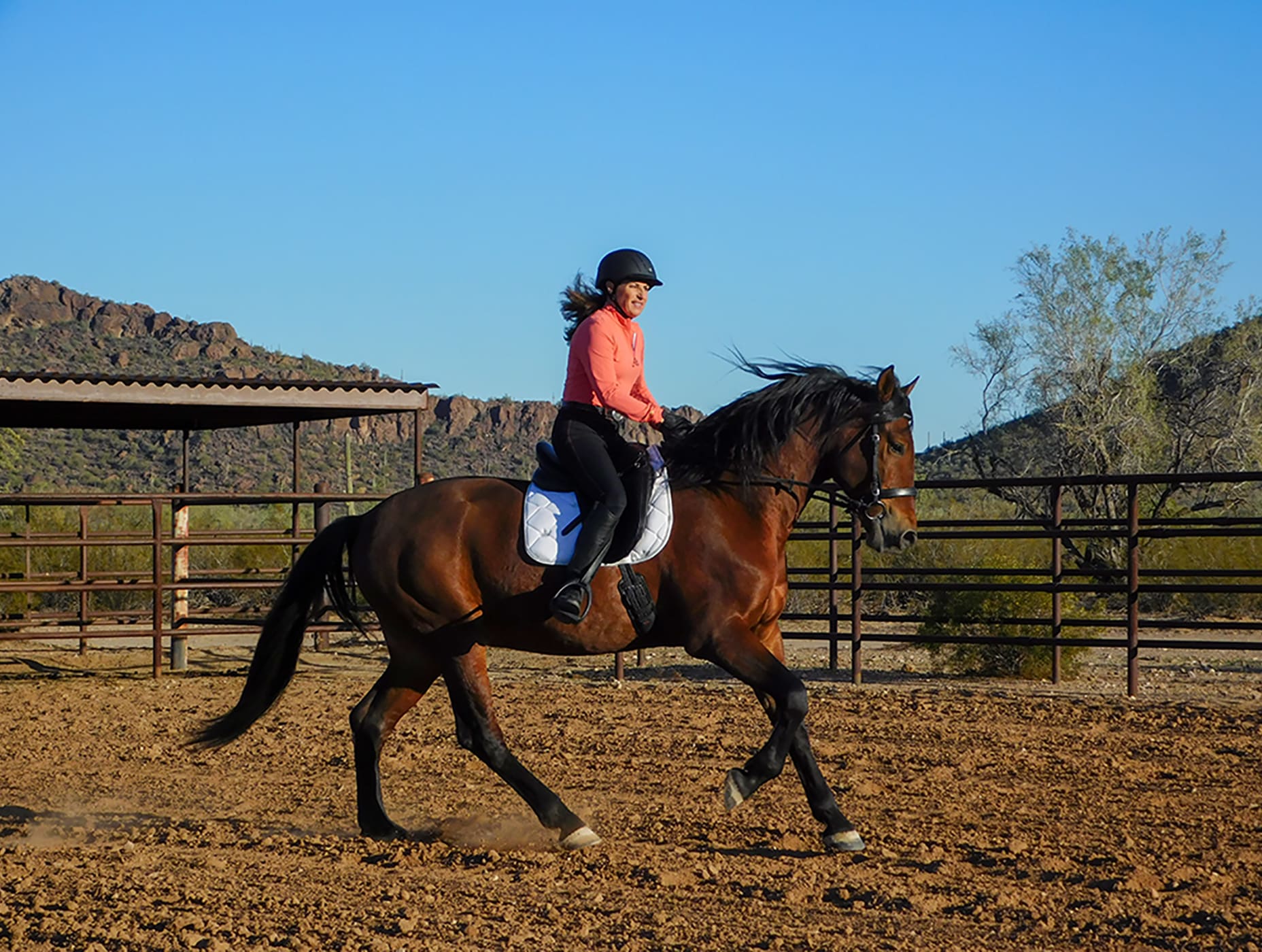Question Category: Talk about Tack
Question: Ms Goodnight:
We always come and see your seminars at Equine affair in Ohio. Last year I really enjoyed your discussion about balance and position I took good notes which I still refer to. I know this is an old question but I am a novice rider I purchased a new horse I got him through a friend because the horse has been let go by an owner who was a young girl who got herself into trouble and the horse was basically left in the pasture for the last 4 years I took him over and started to take good care of him. He has had WP training and took him to a trainer who I sometimes take lessons from, he thought he would be good enough to ride in the open shows. I am a novice rider and so just starting out. The horse is very quiet and just goes with the flow and not caused me one bit of problems so far in the two weeks I have had him. Shots, shoeing, worming and yes even trimming his ears without a twitch, and he actually loaded in the trailer without much trouble.
Now to the point:
He is a 8 year old gelding and being rode in a Tom Thumb he does not want to keep his level and wants to back up without asking him I am starting to show in WP classes with him and I think the Tom thumb bit is at least part of our problem and also he has not been ridden regularly in 4 years and a novice rider I probably blown the last 4 classes only due to his head set, and when trying ask him to lower his head by bumping on the bit it just goes higher. I think he hates the bit. Any ideas? Maybe because I have to ride one handed with a tom thumb in the classes maybe being novice maybe it’s the bit? His Job is going to do some WP classes. Do you think the bit could be part of the problem?
If so what one handed bit would you suggest that would still give me some stop? We also want to go on some trail rides. So far I just love him. Thanks in advance for your help and hope to see you in Ohio’s Equine Affaire.
Dave
Answer: Dear Dave,
The Tom Thumb bit is undoubtedly a big problem with your horse. It is one of the most commonly misunderstood bits. People tend to think that because it is a jointed bit that it is mild. Many people confuse it with a snaffle (sometimes it is even called a Western Snaffle) because of the joint in the middle of the mouthpiece. However, it is not a snaffle at all.
There are basically two classifications of bits: direct pressure and leverage. Direct pressure bits are what we commonly refer to as snaffles and the reins are attached directly opposite the mouthpiece, causing a direct (pound for pound) pull on the horse’s mouth from the rider’s hands. Most, but not all, snaffles are jointed in the middle and they can be very mild. However, there are some very harsh snaffles on the market as well.
A leverage bit has shanks (bars running alongside the horse’s mouth) and a curb strap (or chain), like the Tom Thumb, and the reins are attached below the mouthpiece. There is not direct pressure but leveraged pressure on the horse’s mouth. A leverage bit (commonly referred to as a Curb bit) Get Curb Bit Here can apply pressure to the horse’s lips, tongue and bars; as well as the poll, chin and palate.
As I said, people often confuse the Tom Thumb with a mild bit when in fact it is quite harsh. Whenever you pick up on the reins, two things happen to your horse’s mouth with the Tom Thumb. The joint pokes up into the horse’s mouth and the sides of the bit collapse onto the horse’s jaw in a motion known as the “nutcracker effect.” Both of these harsh actions will cause the horse to throw his head up (to escape the palate pressure) and gape his mouth open (to avoid the nutcracker effect).
It sounds like you have a nice horse that just needs a little schooling in a different bit. I would recommend two things to you. First, get a mild snaffle and work the horse at home, for some time, in the snaffle. It is only with two-handed riding in a mild bit that you can really school the horse to drop his head and relax into the frame.
Secondly, for your curb bit, I would look at some reining bits, my favorites are made by Myler Bits. The jointed mouthpiece is nice and mild if it is designed in such a way to eliminate the two harsh actions. Many jointed curb bits are made with a little tube across the joint which both prevents it from poking the horse’s palate and also keeps the sides from collapsing on itself.
I would also try to find a bit made of sweet iron with copper inlays and, as most Myler’s are, maybe even some sort on roller for the horse to play with. This encourages the horse to accept the bit and play with it, which in turn causes him to salivate and insulate the bit in his mouth. A horse is only relaxed when his jaws are loose and moving, so any bit that encourages the horse to lick and play with the bit will help him stay relaxed. A regular curb bit with a mild port (the hump in the middle of the mouthpiece that gives the horse tongue relief) would be much milder on your horse than the Tom Thumb.
There are literally thousands of bits on the market and some are great bits and many are horrible torture devices that ought to be illegal. It really helps to understand how bits work on the horse’s mouth and head and what makes them mild or harsh. Diameter and texture are two important factors that can make a bit mild or harsh. The wider the diameter and the smoother the mouthpiece, the milder the bit. Conversely, a narrow mouthpiece with any kind of texture (twists, bumps, chains) is very harsh. The same concepts for mildness or harshness of diameter and texture apply to your curb strap and any nose band (e.g., a leather curb strap is much milder than a curb chain).
Two more very important concepts to consider about bits: first, no bit will fix a training problem. Only training will fix a training problem and a very common mistake that people make is to put a horse into a harsher bit when they start having problems. The reason why this doesn’t work is that chances are, at least part of the problem is that the horse is concerned about his mouth (which is pretty much all that horses think about when they are being ridden in a bit), so going to a harsher bit only makes the horse more anxious and tends to exacerbate the problem.
The second very important concept to consider about bits is that the harshest bit in the world can be mild in the right hands and the mildest bit can be harsh in the wrong hands. What this means is that we always have to consider our own riding and work to develop soft and independent hands and always use our hands VERY slowly and softly. One of my favorite horse quotes says, “If the rider’s heart is in the right place, his seat will be independent of his hands.” Piero Santini, “The Forward Impulse”.
One final thought I’ll leave you, has to do with your horse’s conditioning. If he has been un-worked for several years, he is painfully (literally) out of shape. To get an idea of what your horse is feeling, try bending your nose down toward your belly button and hold that position for as long as you can. Notice how quickly your neck will begin to ache. For a horse to learn to carry himself in the type of frame expected in Western Pleasure (or any other rail class), he needs to be conditioned into that frame slowly. When bringing the horse back into show condition, just ask him to hold his frame a few minutes at a time, then release him into a relaxed frame to rest for a few minutes, then ask some more. Be empathetic to what your horse is feeling in the muscles of his neck.
Good luck with your horse, it sounds like you have a keeper. You just need to come together on your training.
Julie Goodnight, Clinician and Trainer
Copyright ©Julie Goodnight 2000. All Rights Reserved. No part of this website may be reproduced without owner’s express consent.



